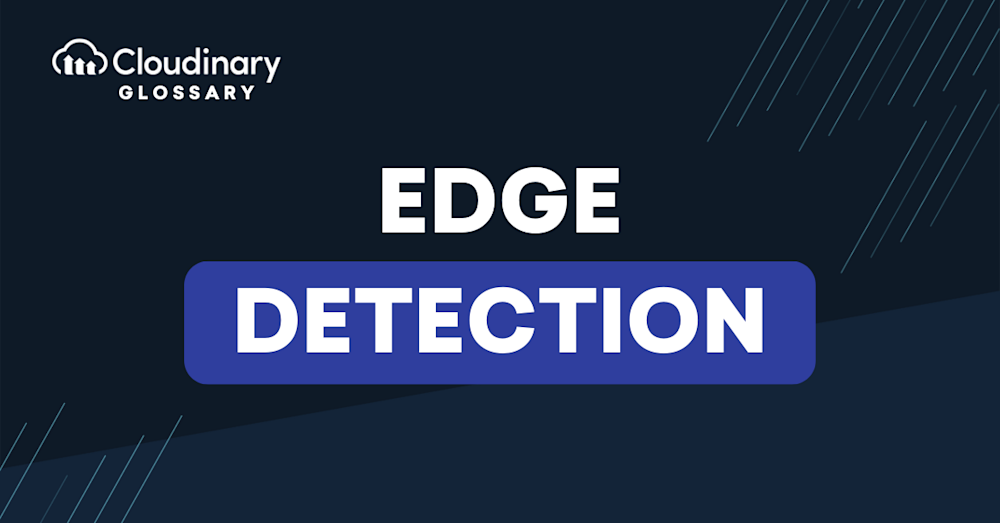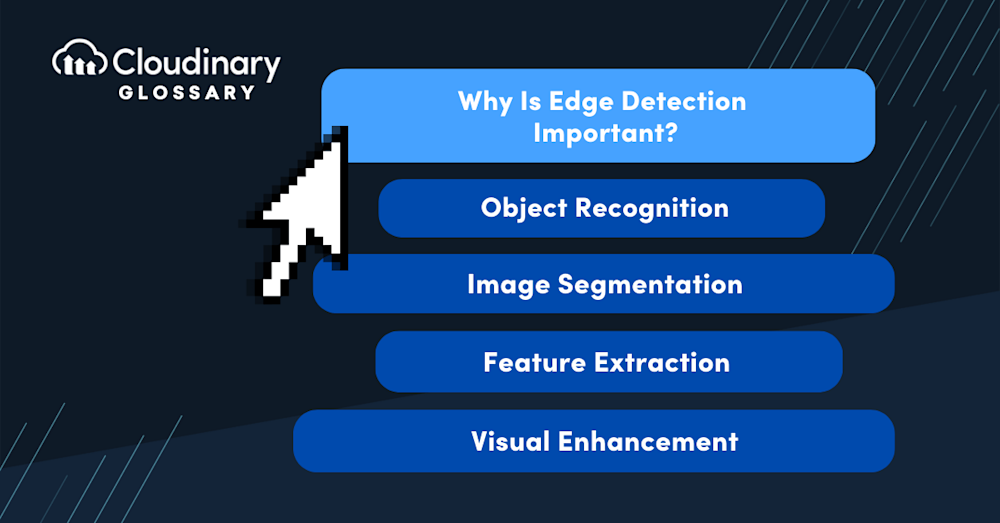What is Edge Detection?
Edge detection is a fundamental technique in image processing that aims to identify boundaries or edges between different objects or regions within an image. These edges represent significant transitions in intensity or color and provide vital information about the structure and content of the image. Edge detection aims to accurately locate these edges and highlight them for further analysis or visualization.
Take a familiar scenario of a landscape picture. Thanks to edge detection algorithms, your computer can discern between the blue sky and the green of a mountain, the branches of a tree stretching out, or the roundness of a boulder, effectively ‘drawing lines’ around them. This method is not just about recognizing endless pixels but perceiving a coherent structure, and it is crucial in fields like object detection, face recognition, and autonomous driving, among others.
Importance of Edge Detection
Edge detection plays a vital role in several image analysis and computer vision applications:
- Object Recognition – Edge detection aids in object recognition by capturing the salient boundaries that differentiate one object from another. These edges provide cues for object classification and identification.
- Image Segmentation – Edges are crucial in segmenting images into meaningful regions or objects. Objects can be separated by detecting edges, and their boundaries can be precisely delineated for analysis or manipulation.
- Feature Extraction – Edges serve as a basis for extracting other high-level features, such as corners, contours, or lines. These features are essential for various computer vision tasks, including image matching, object tracking, and 3D reconstruction.
- Visual Enhancement – Edge detection can be utilized to enhance the visual quality of images. By highlighting edges, images can appear crisper and more defined, allowing for better visualization and analysis.
Methods of Edge Detection
Multiple methods have been developed for edge detection, each with advantages and limitations. Here are a few commonly used techniques:
- Gradient-based Methods: These methods calculate the image intensity gradient to identify areas of rapid change, which indicate the presence of edges. Common gradient-based operators include the Sobel, Prewitt, and Roberts operators.
- Laplacian-based Methods: The Laplacian operator measures the second derivative of the image intensity and detects areas of zero crossing, where the intensity changes from positive to negative or vice versa. These zero crossings correspond to edges.
- Canny Edge Detection: The Canny edge detector is a multi-step algorithm that provides accurate and reliable edge detection. It involves smoothing the image, calculating gradients, performing non-maximum suppression, and applying hysteresis thresholding to determine the final edges.
Pros and Cons of Edge Detection
Pros
- Structural Information: Edge detection provides valuable structural information about the objects and boundaries within an image.
- Feature Extraction: Other high-level features can be extracted by identifying edges, such as corners and contours.
- Object Segmentation: Edges can help to segment objects or regions within an image, enabling subsequent analysis or manipulation.
Cons
- Noise Sensitivity: Edge detection can be sensitive to noise, leading to false positives or incomplete edge detection in noisy images.
- Edge Fragmentation: In some cases, edges may be fragmented or discontinuous, especially when the image contains complex textures or low-contrast regions.
- Parameter Tuning: Some edge detection methods require fine-tuning parameters to achieve optimal results, making them more user-dependent.
Final Thoughts
Edge detection is a fundamental technique in image processing that uncovers the structural features and boundaries within an image. Despite its limitations, edge detection provides valuable information for object recognition, image segmentation, feature extraction, and visual enhancement.
Optimize, transform, and manage your media assets like a pro with Cloudinary. Sign up today and unlock the power of your images.
Additional Resources You May Find Useful:





